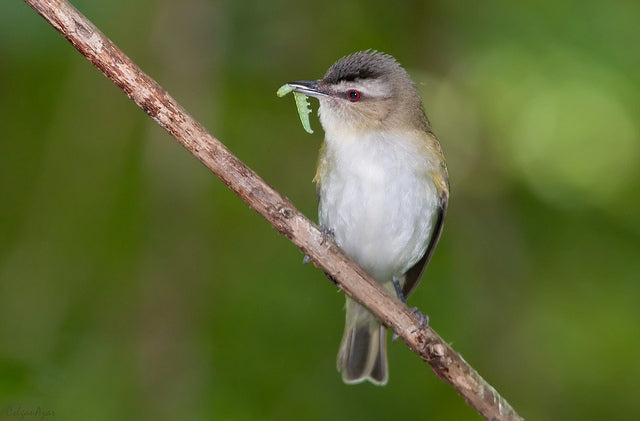Offer
Provide additional details about the offer you're running.
Provide additional details about the offer you're running.
Provide additional details about the offer you're running.

Developing at the end of the bird’s first winter season, the red iris is what gives this small songbird its name. Although sometimes difficult to decipher unless you are intimately close to the bird, it is their song that has the ability of not only entrancing birders from all walks of life but also makes the bird relatively easy to recognize by ear.
These transcontinental migrants use their magnetic compass to guide them on their migration pathways and when it comes to crossing the daunting Gulf of Mexico, the route they take often depends on the size of the bird. When they encounter the Gulf, it is their available fat stores that ultimately determine which path they will take. Typically, fatter birds will make the trip smack dab through the middle of the Gulf, while their leaner counterparts will hug the shoreline or even head inland while traversing the expansive body of water.
This time of year, these birds are abundant across much of Canada and the United States. Their summer or breeding range stretches from Florida across to most of Texas heading north through the American Midwest, stretching as far west as Washington state. In the east, the birds can be found all the way up the eastern seaboard into Canada’s Maritimes, Quebec, Ontario and west through Manitoba, Saskatchewan, Alberta and parts of British Columbia.
These songbirds call the tropics of South America home through the winter months, while a subspecies of the bird remains on the continent throughout the year. As far as habitat goes, these vocal birds can be found in deciduous and mixed forests, but do venture into urban environments and open areas at times.
As far as vireos go, these guys are considered large in size. In comparison with other songbirds, they are of average composition. They are denoted by a long head, stout neck and a long but strong bill.
These birds sport an olive green colouring with white underparts but it is their striking head that can really turn heads. The gray-crowned head of this bird is treated with a beautiful white eyebrow stripe, accented on both sides by black lines. In addition to these markings, as we stated above, the red eye can become quite apparent in adults, with the proper viewpoint.
Did we mention these birds like to sing? Often referred to as a monotonous, neverending song, the red-eyed vireo can seemingly go on forever when it starts to sing. Their repertoire of songs is equally impressive as well. In fact, during 14 hours of surveillance, a Toronto-area red-eyed vireo was said to have sang over 22,000 songs during only 10 of the hours it was under surveillance.
Their call is a clumped-together series of notes either trilling up or down. Many birders have said this bird sounds much like it has asked itself a question and then goes on to answer it repeatedly.
High Quality Blend